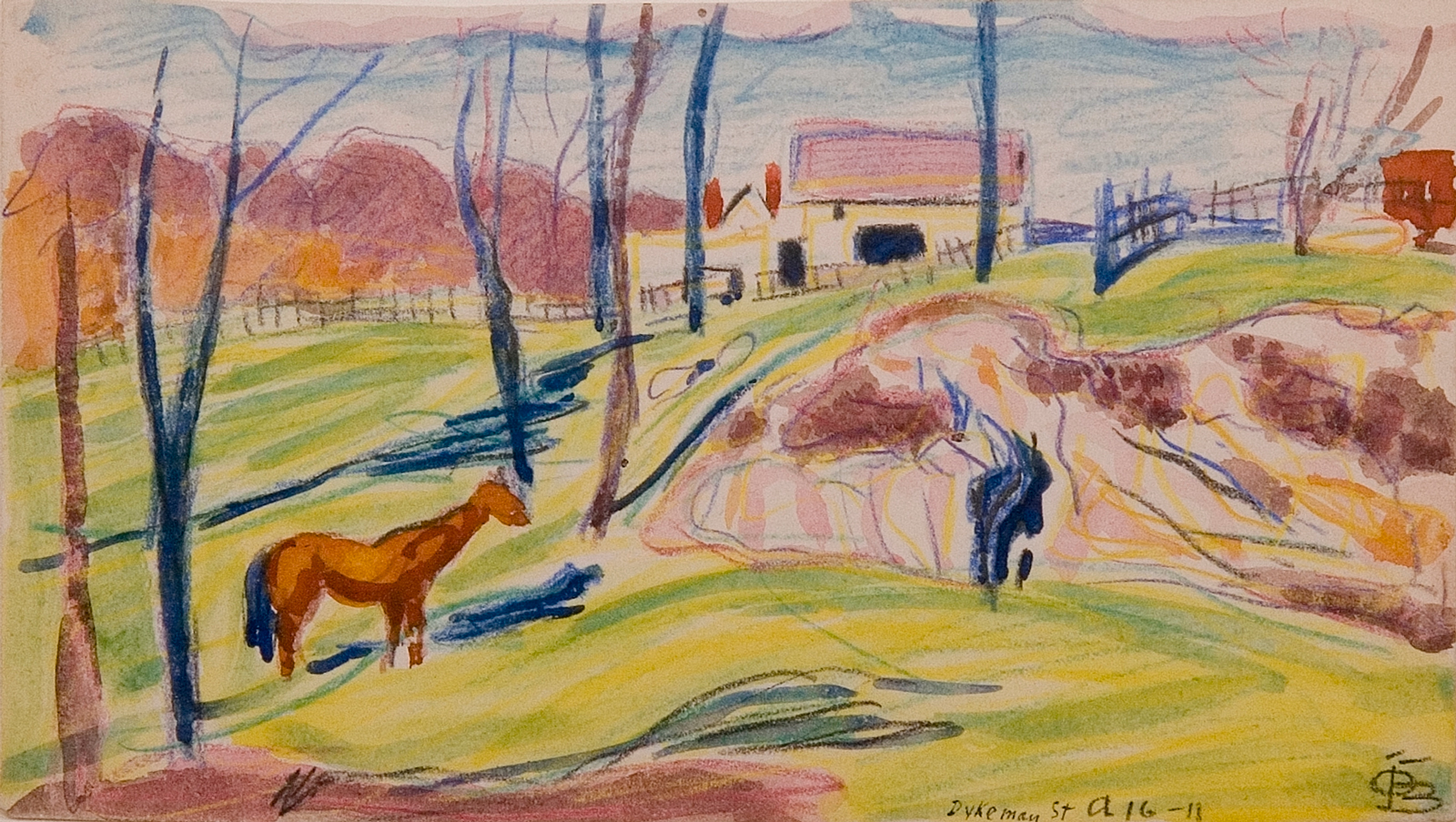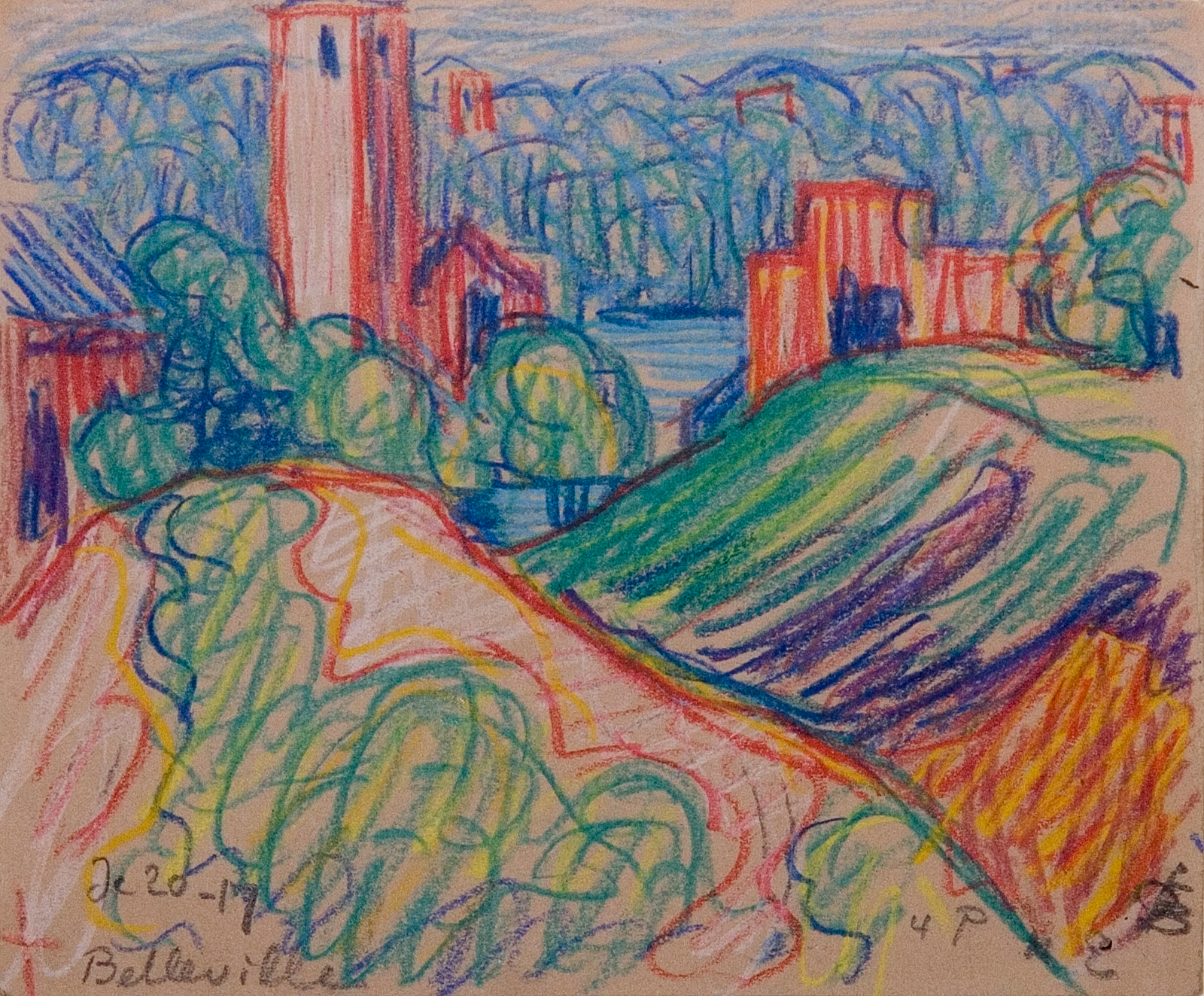Oscar Bluemner
Oscar Bluemner (1867-1938) was a painter best known for his bold color work and dreamlike landscapes that verged on abstraction. He is considered one of the early pioneers of modernism in America. Born in Germany and following in his father and grandfather’s footsteps, Bluemner originally trained as an architect at the Royal Academy of Design in Berlin. He immigrated to the United States in 1892 to further his career in Chicago and New York City but after a couple decades became disillusioned with architecture and turned his focus to painting. In 1908 he met Alfred Stieglitz, and in 1912 embarked on a 7-month trip to Europe where he absorbed trends in Fauvism, Expressionism, Futurism, and Cubism that influenced the development of his own signature colors — he referred to himself as “the Vermillionaire” — and strong, angular lines. In 1913 Stieglitz featured Bluemner’s work at the Armory Show and gave him a solo show in 1915 at the 291 gallery. After his wife’s passing in 1926, Bluemner’s work took on a darker, more symbolic tone that leaned heavily on his theories of color and emotion. Though struggling to make ends meet up to his death, Bluemner continued to be featured in prominent exhibitions like the first Whitney Biennial in 1932 and a 1935 solo show at the Marie Harriman Gallery in New York.


